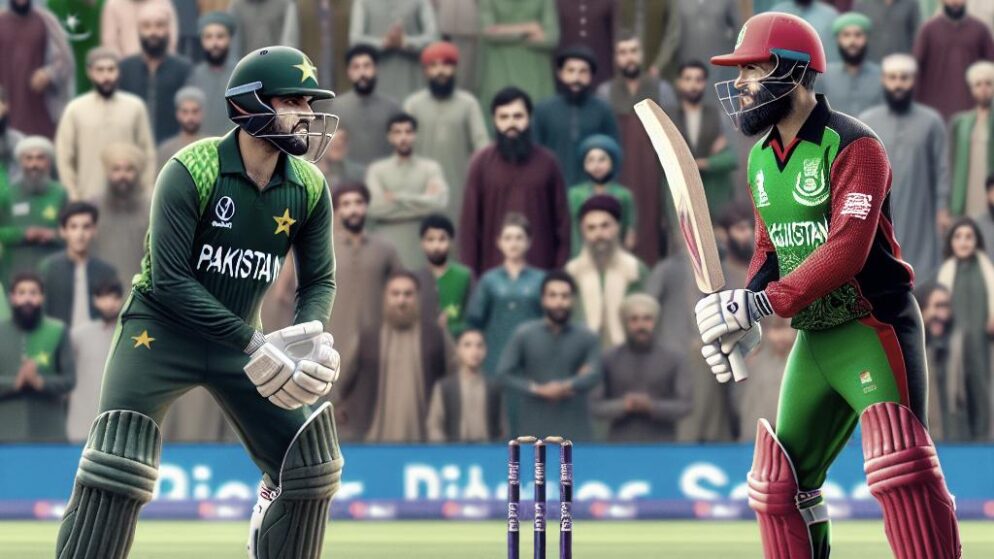

Pak vs Afg Cricket Rivalry.
The Pak vs Afg cricket rivalry is a thrilling encounter that has captivated fans across the globe. With explosive performances and nail-biting finishes, this emerging rivalry between Pakistan and Afghanistan is redefining cricket’s landscape. As the cricket world eagerly watches each match, it’s important to delve into the dynamics that make this rivalry a must-watch. In this article, we will explore key moments, current team dynamics, and measurable impacts on future cricket events. From historical encounters to strategic gameplay, we’ll provide a deep dive into every aspect of the Pak vs Afg rivalry.
Historical Background of the Pak vs Afg Cricket Rivalry
The cricketing relationship between Pakistan and Afghanistan has grown significantly over the last two decades. The first notable encounter between these teams took place in 2012 during limited-overs formats, marking the beginning of a spirited rivalry. Initially, Pakistan dominated the matches owing to their long-standing experience in international cricket.
However, Afghanistan has made remarkable strides, especially with their entry into Test cricket in 2018. It wasn’t just their rapid ascent that stirred the rivalry—the Afghan players’ tenacity and resilience quickly made them competitive adversaries.
Key historical matches include the ICC World Cup 2019 game, where Pakistan narrowly defeated Afghanistan, showcasing the high stakes and tension typical of these encounters. Such matches highlight the trajectory of an evolving rivalry that not only excites fans but also contributes significantly to the sport’s Asian narrative.
Current Team Dynamics and Head-to-Head Statistics
As of 2023, the current team dynamics between Pakistan and Afghanistan are quite intriguing. Pakistan, known for its fast bowlers and skilled batsmen, continues to leverage its strengths in bowling and all-rounder versatility. Afghanistan, with its spin-heavy attack and aggressive batting style, presents a formidable challenge.
Head-to-head statistics reveal Pakistan’s overall dominance in most formats. However, Afghanistan’s victories in T20 internationals over the past few years signal a shift in competitive balance. According to ESPN Cricinfo, Pakistan leads in ODIs with a record of 6-0 as of October 2023.
- ODIs: Pakistan leads 6-0
- T20Is: Pakistan leads 5-2
- Test Matches: Afghanistan yet to claim victory over Pakistan
Internal link: For a comprehensive analysis of Pakistan’s fast-bowling legacy, check out our.
Strategic Gameplay and Player Analysis
The strategic gameplay in Pak vs Afg matches differs significantly based on format. For one-day internationals (ODIs), Pakistan often employs an aggressive start followed by cautious middle overs, relying heavily on their bowling attack to constrain Afghanistan’s run chase.
Afghanistan’s strategy revolves around setting up solid batting performances despite their reputation as bowlers. Players like Rashid Khan and Mohammad Nabi have been pivotal in shifting momentum through their all-round capabilities. Player analysis shows that
Babar Azam and Fakhar Zaman from Pakistan, alongside Afghanistan’s Rashid Khan, have consistently delivered match-winning performances.
Real-world strategies employed in these matches reflect an adaptive approach from both teams, demonstrating a healthy competitive spirit that enriches the sport’s strategic dimensions.
The Cultural and Regional Impact on Cricket
The Pak vs Afg cricket rivalry is more than just a sports encounter; it reflects cultural exchanges and regional dynamics within the cricketing community. Both countries share a cultural affinity and a love for cricket, which fuels this rivalry with passionate fan support and media attention.
Increased cricket diplomacy efforts have fostered goodwill, exemplified by bilateral series aimed at strengthening ties through sports. The influx of Afghan players into various cricket leagues worldwide, notably the Pakistan Super League (PSL), highlights the growing acceptance and integration of Afghan cricketers in global cricket.
Statistics suggest that these footfalls have contributed positively to regional tourism, with fans traveling across borders to witness live matches. This rivalry is a celebratory nod to cricket’s power as a unifying force amid diversity.
The Future of Pak vs Afg Rivalry in World Cricket
Looking ahead, the Pak vs Afg rivalry stands to gain more attention and strategic significance. With both nations investing in talent development and infrastructure, future encounters promise exciting displays of cricketing prowess. Cricket boards have frequently expressed their intent to schedule more bilateral series, adding depth to this rivalry.
The International Cricket Council (ICC) has indicated potential alterations to tournament structures that may increase encounters between associate and full members, potentially enriching the competitive fabric of world cricket. The Pak vs Afg rivalry, therefore, serves as a beacon of cricket’s evolving dynamics, poised to inspire generations to come.
Internal link: Stay updated on cricket’s global calendar with our
.
Lessons Learned: Insights from the Pak vs Afg Rivalry
The Pak vs Afg cricket rivalry teaches several valuable lessons about sportsmanship, competition, and cultural integration. The ongoing competitive spirit demonstrates how emerging teams can challenge established cricketing nations, contributing to the vision of a universally inclusive sport.
As we anticipate more encounters between these two cricket teams, the lessons gleaned underscore the importance of evolving strategies, mutual respect, and the transformative power of sports diplomacy. This rivalry continues to be an illustrative example of how cricket, beyond just being a game, serves as a platform for forging connections across borders.
| Section | Key Takeaways |
|---|---|
| Historical Background | Rapid evolution of Afghanistan as a competitive team; memorable World Cup encounters. |
| Current Team Dynamics | Pakistan’s dominance with emerging challenges from Afghanistan in T20 formats. |
| Strategic Gameplay | Adaptive strategies with iconic players reshaping outcomes in matches. |
| Cultural Impact | Regional cricket diplomacy enhancing cultural ties and sports tourism. |
| Future of the Rivalry | Potential for increased competitions and influence on future ICC tournaments. |




